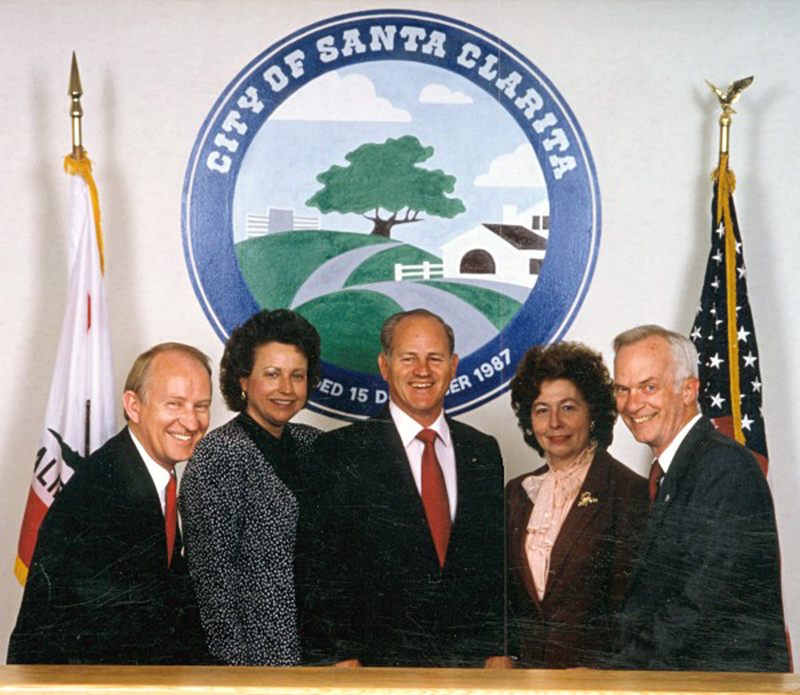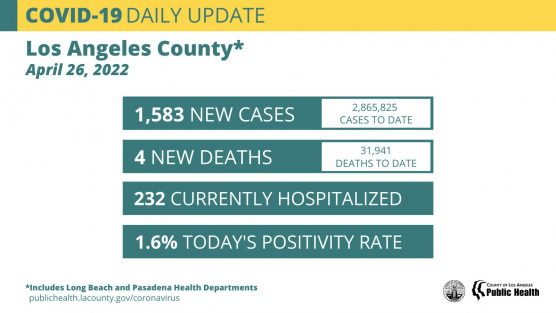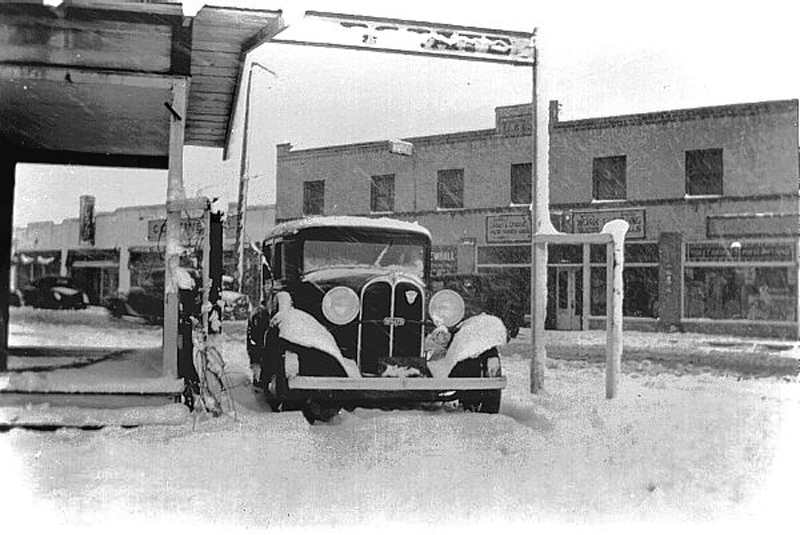The Los Angeles County Department of Public Health confirmed Tuesday four new deaths and 1,583 new positive cases in Los Angeles County and 36 new cases in the Santa Clarita Valley.
This new data brings Los Angeles County death totals to 31,941, county case totals to 2,865,825 and Santa Clarita Valley case totals to 73,595 since March of 2020. There are 232 people with COVID-19 currently hospitalized.
More than 11,829,000 individuals tested; 22% of people tested positive to date.

Data is by date reported by Public Health, but does not necessarily represent the date of testing, hospitalization, or death.
* Number reflects an undercount due to a lag from weekend reporting.
Public Health Working to Increase Information Sharing and Distribution of Anti-Virals
Ensuring easy, convenient, and readily available access to therapeutics to treat COVID-19 can prevent severe illness or death. With many residents living in under-resourced communities at elevated risk, Public Health is working to increase information sharing and distribution of COVID-19 antivirals in these communities.
While many people with COVID-19 will have mild symptoms, some are at higher risk for severe illness and may be eligible to receive therapeutics. Residents who test positive for COVID-19, and are at elevated risk for severe illness, should promptly call their doctor to see if they qualify for therapeutics that include oral medications Paxlovid and Molnupiravir, or injectable treatments such as Bebtelovimab or Remdesivir. Residents who cannot receive a COVID-19 vaccination for medical reasons, or whose immune system is not strong enough to mount a response to the vaccine, should speak to their provider about Evusheld, an injectable medicine used to prevent COVID-19 infections.
Residents that do not have access to a clinical provider can call the COVID-19 information line at (833) 540-0473 between 8 a.m. – 8:30 p.m. daily. The call center is a free resource where residents can get culturally and linguistically appropriate information about available therapeutics and how to access them.
To ensure that residents have ready access to these critical therapeutics, Public Health is building a vast network of health care providers and pharmacies that can provide information and prescribe these medications, particularly in under-resourced communities. Currently, there are 593 sites providing antivirals across the entire County, with 326 sites located in under-resourced neighborhoods. There are also 74 “Test to Treat” programs offered at CVS Minute Clinics, Walgreens, and community clinics that allow patients to get tested and treated on the same visit at the same location. Residents can view the “Test to Treat” locations by visiting http://www.ph.lacounty.gov/covidmedicines.
This month, Public Health launched our new COVID-19 Medication Telehealth Service, which helps residents assess their eligibility for these treatments and, if eligible, arranges for them to receive the medication.
Individuals who are determined by our Telehealth provider to be eligible for oral antivirals can choose to be referred to their provider or a Test to Treat site to receive the medications; or they can have a prescription sent to a nearby pharmacy; or have the medication shipped to them overnight at no charge.
Residents who think that they may be a candidate for therapeutics or have questions can call (833) 540-0473 or visit http://www.ph.lacounty.gov/covidmedicines or www.ph.lacounty.gov/covidmedicamentos. Public Health staff is available 7 days a week from 8 a.m. to 8:30 p.m. Since it was launched, Public Health’s Medication Telehealth Service has assisted more than 360 residents by answering questions, helping residents navigate the process, and connecting them with these lifesaving therapeutics.
As of April 15, Public Health has distributed 32,000 doses of Paxlovid, 44,180 doses of Molnupiravir, and 18,744 doses of Evusheld, with 62% of Paxlovid doses, 77% of Molnupiravir doses, and 58% of Evusheld allocated to residents living in under-resourced communities in the County.
A wide range of data and dashboards on COVID-19 from the Los Angeles County Department of Public Health are available on the Public Health website at http://www.publichealth.lacounty.gov.
To keep workplaces and schools open, residents and workers are asked to:
– Get tested to help reduce the spread, especially if you traveled for the holidays, have had a possible exposure, or have symptoms, or are gathering with people not in your household
– Adhere to masking requirements when indoors or at crowded outdoor spaces, regardless of vaccination status
– Residents are legally required to be isolated if they have a positive COVID test result and vaccinated close contacts with symptoms and unvaccinated close contacts need to be quarantined.
For information on where you can get tested, please visit www.covid19.lacounty.gov/testing/.
For updated isolation and quarantine guidance, please visit www.publichealth.lacounty.gov.
COVID-19 vaccines are safe and effective and are recommended for everyone 5 years old and older to help protect against COVID-19. Vaccinations are always free and open to eligible residents and workers regardless of immigration status. Appointments are not needed at all Public Health vaccination sites and many community sites where first, second, and third doses are available.
To find a vaccination site near you, or to make an appointment, please visit:
www.VaccinateLACounty.com (English) or
www.VacunateLosAngeles.com (Spanish).
William S. Hart Union High School District COVID-19 Dashboard
No updated reports were available from the William S. Hart School District on Tuesday, April 26.
The William S. Hart Union High School District provides ongoing information to our community regarding COVID-19 cases while maintaining confidentiality for our students and staff. The COVID-19 case data below is updated regularly to indicate any currently confirmed COVID-19 positive case in staff members or students by school site. The data below is specific to individuals who have been physically present on a District campus within 14 days of receiving a positive COVID-19 test. The District, in conjunction with the Los Angeles County Department of Public Health, conducts contact tracing and directly notifies and provides resources for parents of students identified as close contacts (6 feet or less for 15 cumulative minutes or more).
Note: To see the communication process in the event of a positive COVID-19 case, visit https://www.hartdistrict.org/apps/pages/covid-19dashboard.
Student Dashboard

Staff Dashboard

Santa Clarita Valley Tuesday Update
As of 5 p.m. Tuesday, the L.A. County Public Health dashboard reported no additional deaths in the SCV leaving the total number of deaths from COVID-19 in the SCV since the onset of the pandemic at 470.
The following is the community breakdown per L.A. County’s dashboard:
Santa Clarita: 382
Castaic: 30
Acton: 17
Stevenson Ranch: 15
Unincorporated Canyon Country: 9 (revised from 10)
Agua Dulce: 6
Val Verde: 3 (revised from 4)
Valencia: 2
Unincorporated Bouquet Canyon: 2
Elizabeth Lake: 1
Newhall: 1
unincorporated Saugus/Canyon Country: 1
Lake Hughes: 1
SCV Cases
Of the 73,595 cases reported to Public Health for the SCV to date, the community breakdown is as follows:
Santa Clarita: 54,397
Castaic: 7,554
Stevenson Ranch: 4,092
Canyon Country (unincorporated portion): 2,622
Acton: 1,525
Val Verde: 847
Agua Dulce: 783
Valencia (unincorporated portion west of I-5): 678
Saugus (unincorporated portion): 317
Elizabeth Lake: 208
Bouquet Canyon: 149
Lake Hughes: 148
Saugus/Canyon Country: 90
Newhall (Unincorporated portion): 87
Sand Canyon: 49
San Francisquito/Bouquet Canyon: 34
Placerita Canyon: 15
*Note: The county is unable to break out separate numbers for Castaic and PDC/NCCF because the county uses geotagging software that cannot be changed at this time, according to officials. Click here for the LASD COVID-19 dashboard.

California Tuesday
The California Department of Public Health now updates their numbers on Tuesday and Friday. The information below is from the most recent data released Tuesday, April 26.
Vaccinations
– 74,815,999 total vaccines administered.
– 84.2% of the eligible population (5+) has been vaccinated with at least one dose.
– 51,757 people a day are receiving COVID-19 vaccination (average daily dose count over 7 days).
Cases
– California has 8,587,792 confirmed cases to date.
– Monday’s average case count is 3,286 (average daily case count over 7 days).
– Unvaccinated people are 5.5 times more likely to get COVID-19 than boosted individuals (March 28, 2022 – April 3, 2022).
Testing
– The testing positivity rate is 2.7% (average rate over 7 days).
Hospitalizations
– There are 950 hospitalizations statewide.
– There are 112 ICU patients statewide.
– Unvaccinated people are 12.5 times more likely to be hospitalized than boosted individuals (March 28, 2022 – April 3, 2022).
Deaths
– There have been 89,391 COVID-19 deaths since the start of the pandemic.
– COVID-19 claims the lives of 15 Californians each day (average daily death count over 7 days).
– Unvaccinated people are 8.8 times more likely to die than boosted individuals (March 21, 2022 – March 27, 2022).
Health Care Workers
As of April 21, local health departments have reported 155,464 confirmed positive cases in health care workers and 578 deaths statewide.
Testing Turnaround Time
The testing turnaround time dashboard reports how long California patients are waiting for COVID-19 test results. During the week of April 10 to April 16, the average time patients waited for test results was 0.7 day. During this same time period, 90% of patients received test results in one day and 98% received them within two days.
Multisystem Inflammatory Syndrome in Children (MIS-C)
As of April 25, there have been 960 cases of Multisystem Inflammatory Syndrome in Children (MIS-C) reported statewide. MIS-C is a rare inflammatory condition associated with COVID-19 that can damage multiple organ systems. MIS-C can require hospitalization and be life threatening.
Additional Updates
Mask Guidance: Under California’s mask guidance, universal masking is required only in specified higher risk settings like hospitals, public transit and congregate living facilities. Unvaccinated persons are required to mask in all indoor public settings. Fully vaccinated individuals are recommended to continue indoor masking when the risk may be high. Workplaces will continue to follow the COVID-19 prevention standards set by CalOSHA. Local health jurisdictions may implement requirements that are stricter than state guidance.
Slow the Spread: Get Vaccinated and Boosted for COVID-19
The risk for COVID-19 exposure and infection continues as a number of Californians remain unvaccinated and unboosted.
Real-world evidence continues to show that the vaccine is preventing severe illness, hospitalization, and death. Public health officials urge Californians to get vaccinated and boosted as soon as possible.
It is recommended that every vaccinated person 12 years or older should get a booster as long as they received their second dose of the Pfizer or Moderna vaccine at least five months ago or they received their Johnson & Johnson vaccine at least two months ago.
Vaccination appointments can be made by visiting myturn.ca.gov or calling 1-833-422-4255. The consent of a parent or legal guardian may be needed for those under age 18 to receive a vaccination. Visit Vaccinate All 58 to learn more about the safe and effective vaccines available for all Californians 5+.
Your Actions Save Lives
Protect yourself, family, friends and your community by following these prevention measures:
Keep California Healthy
Protect yourself, family, friends and your community by following these prevention measures:
– Get vaccinated when it’s your turn. Californians age 16+ are eligible to make an appointment.
– If you are experiencing symptoms of COVID-19 (fever, cough, shortness of breath, fatigue, muscle or body aches), call your health care provider.
– If you believe you have been exposed, get tested. Free, confidential testing is available statewide.
– Keep gatherings small and outdoors and follow state and local public health guidance.
– Wear a mask and get the most out of masking – an effective mask has both good fit and good filtration.
– Wash hands with soap and water for at least 20 seconds.
– Delay non-essential travel outside of California until you are fully vaccinated. Follow California’s travel advisory.
– Avoid close contact with people who are sick and stay home from work and school if you feel ill.
– Add your phone to the fight by signing up for COVID-19 exposure notifications from CA Notify.
– Answer the call or text if a contact tracer from the CA COVID Team or your local health department tries to connect.
Additional data and udpates:
Tracking COVID-19 in California
State Dashboard – Daily COVID-19 data
County Map – Local data, including tier status and ICU capacity
Data and Tools – Models and dashboards for researchers, scientists, and the public
Blueprint for a Safer Economy– Data for establishing tier status
COVID-19 Race & Ethnicity Data – Weekly updated Race & Ethnicity data
Cases and Deaths by Age Group – Weekly updated Deaths by Age Group data
Health Equity Dashboard – See how COVID-19 highlights existing inequities in health
Tracking Variants – Data on the variants California is currently monitoring
Safe Schools for All Hub – Information about safe in-person instruction
School Districts Reopening Map – data on public schools and reported outbreaks
Always check with trusted sources for the latest accurate information about novel coronavirus:
– Los Angeles County Department of Public Health
– California Department of Public Health
– Centers for Disease Control and Prevention
– Spanish
– World Health Organization
L.A. County residents can also call 2-1-1.
What to Do if You Think You’re Sick
Call ahead: If you are experiencing symptoms of COVID-19 (fever, cough or shortness of breath), call your health care provider before seeking medical care so that appropriate precautions can be taken. More than 85 community testing sites also offer free, confidential testing: Find a COVID-19 Testing Site.
For more information about what Californians can do to prevent the spread of COVID-19, visit Coronavirus (COVID-19) in California.
California continues to issue guidance on preparing and protecting California from COVID-19. Consolidated guidance is available on the California Department of Public Health’s Guidance webpage.
Like this:
Like Loading...
Related





 Tweet This
Tweet This Facebook
Facebook Digg This
Digg This Bookmark
Bookmark Stumble
Stumble RSS
RSS






























REAL NAMES ONLY: All posters must use their real individual or business name. This applies equally to Twitter account holders who use a nickname.
0 Comments
You can be the first one to leave a comment.